It is a beautiful morning as the clouds descend close to the horizon and gather around the distant ridges of the mountains and wrap them around in their fold. On the fields below, fresh and fluffy cotton compete with the gentle clouds as women pick them up and load them into the trucks. Our car stops behind them as the overflowing cotton falls like wisps of clouds on the ground. I take a handful and feel the softness on my skin, as the men grin and watch me.
There is something special about rustic India, where almost every experience is a romance in itself. You never tire looking at herds of goats, women carrying sacks of groundnuts, a sea of yellow sun flower fields, curious men at the local tea shops, the mud roads and the many detours and of course the landscape – stark and endless, stretching out in front of you painted in various colours. The lake then calls for a halt .The lotuses shelter the birds that suddenly get active and I watch them for a while, before moving on.
I am travelling down from Yaadgiri, a small town in north Karnataka towards Kanaganahalli in Sannathi, a non descript village on the banks of the river Bheema. You will not find it in any map, let alone in the tourist map. However, my interest in the small hamlet is courtesy Emperor Ashoka of the Mauryan Dynasty, who had left his mark here several centuries ago. It is believed that the king sent his son Mahindra and daughter Sanghamitra as his emissaries to spread Buddhism in this region. And the remains of a Buddhist stupa was excavated here by the ASI almost two decades ago.
The story begins here with the discovery of an edict belonging to Ashoka. Kailash Rao, Associate Professor and conservation architect from Manipal University who is consulting the ASI in restoring the stupa tells me that the edict was found in the neighbouring Chandralamba temple when the roof collapsed and the old deity broke. Dr SVP Halakatti , Superintendent Archaeologist of the Dharwad Circle adds that the inscription slab was used initially as a pedestal for the deity.
I see the edict placed right at the entrance in Sannathi. Written in Brahmi script and in the Prakrit language , it speaks about religious tolerance. Looking around , I find many panels of sculptures , carved in limestone, strewn around the place. The sun’s rays fall directly on the drums and the larger than life panels are arranged circularly around .
A group of school students are walking around , trying to be disciplined even as the teachers force them to stand in a single file. I go over to the ASI board to get some information.. The Maha stupa it says was referred to as Adholoka Maha Chaitya or the Great Stupa of the Netherworlds and was dated around 3rd century BC to 3rd century AD.
It is fascinating to hear from these historians about how the story enfolded here. Professor Kailash Rao tells me that the discovery of the edict led to further inscriptions that were found in the area , which eventually got the ASI to excavate the mounds here. The site is a treasure trove and the most priceless treasure belongs to Ashoka himself and that is the first piece of carving that I see in Sannathi. I am excited as I see a broken portrait of a king with his queens gently pieced together. It lies a bit far away from the main stupa under the shelter of a tree . This am told is the very first inscribed panel of the king Ashoka , to be discovered in India. “ We wouldn’t know if there were any before, but this is the first where we saw with an inscription that says Raya Ashoka ,” says the Professor adding that this would probably help them discover more of his portraits.
I am awe struck as I see the larger than life panels. Stories and events from Buddha’s life – his birth and his first sermon, portraits of more kings and queens from the Satavahana period, vignettes from Jataka Tales, mythical creatures, ancient cities and stupas like Varanasi and Sanchi are carved in both the drum and dome panels made of limestone. Kailash rao says it was like a jig saw puzzle , putting them altogether, as more than hundred such slabs were discovered in pieces. Dr Halkatti tells me that several life size statues of Buddha were discovered, including the four that are normally placed on ayaka platforms and represent the cardinal directions.
I become a student all over again, remembering my class five text books that taught me about Hinayana and Mahayana forms of Buddhism. This stupa was built largely in the Mahayana period, where Buddha was depicted in the human form, unlike the Hinayana era, when he was symbolically shown . However, even here you can see symbolic images such as the Bodhi tree , his feet and an empty throne.
The original stupa, says Dr Halkatti would have probably been built during the Ashokan period as some pottery shards were discovered here as well. I learn that during his time, stupas were normally built as earthern domes. Some parts of the Ashokan stupa are still intact , while the architecture of the later Satavahana period stands out distinctly. The Professor explains that the stupa is the missing link connecting all the other stupas especially with respect to the iconography .
There is more to this ancient site than just Ashoka. Professor Kailash Rao says that there were several discoveries here that would also take you down to prehistoric times. Besides the stupa, bangles, beads, pottery, bricks, tiles, stone heads, earthen vessels were found here.
The conservation of the stupa is in progress and pains have been taken to restore it as scientifically as possible . The challenge says the Professor is to maintain a balance between recreating it and still retain the authenticity. Empirical evidence has been collected to understand the way the stupa would have originally been created. “ And now we have drafted a conservation policy which we will discuss with scholars, conservationists and historians ,” says Dr Halakatti. In the meanwhile , a shelter has been proposed to protect these carvings from nature with a multi media panel that will explain the Jataka tales .
Even as the historians decide on policies and documentation , I stand here and gaze at the peaceful face of a Buddha statue lying in the rubble, smiling at me. I wonder how many more Buddhas are lying under our earth in various parts of our country waiting to be discovered.
This article was published in Deccan Herald in Spectrum .

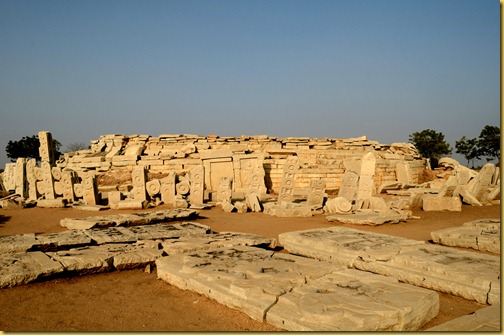
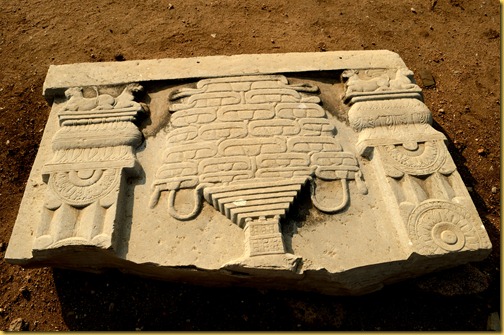
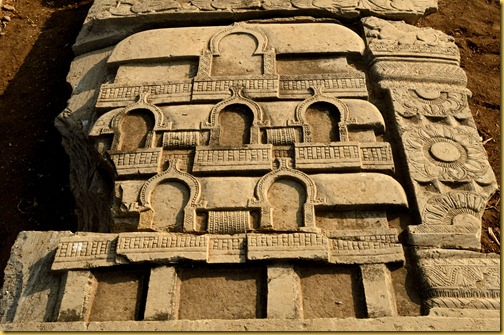


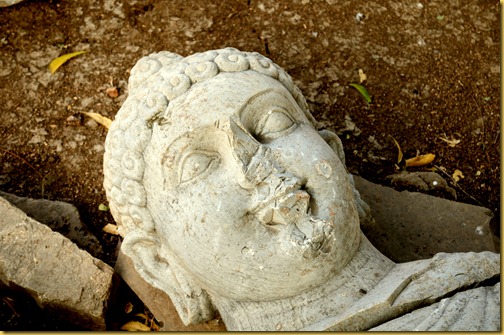
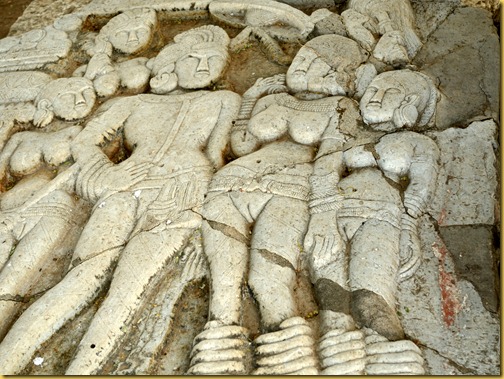

No comments:
Post a Comment